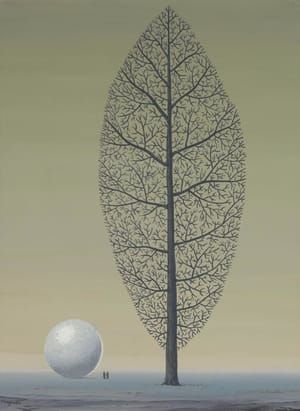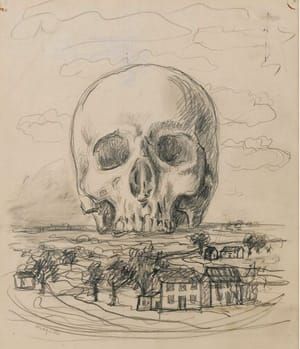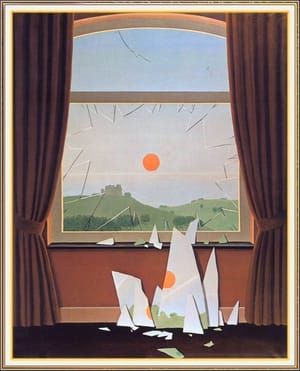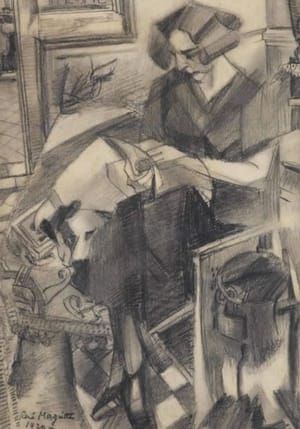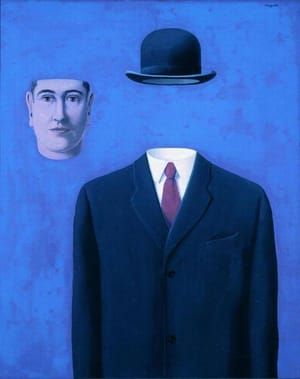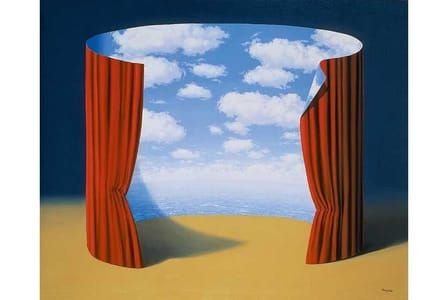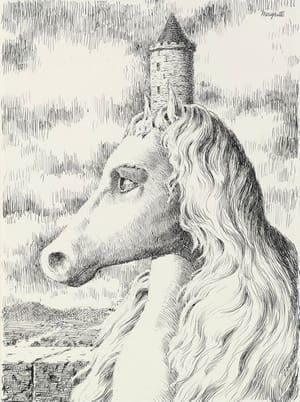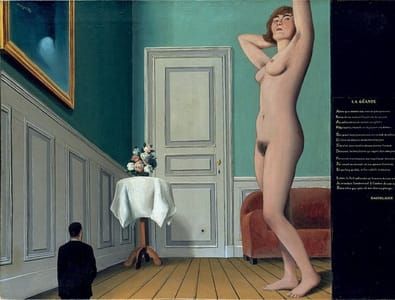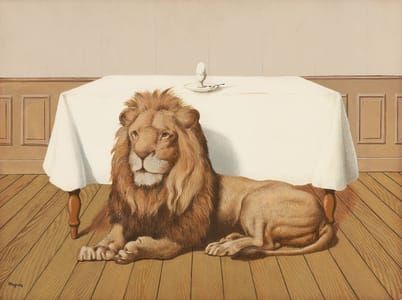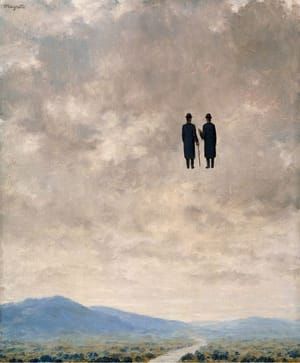

La recherche de l'absolu (The Search for the Absolute)
René Magritte
Towards the end of 1940, Magritte painted three oils depicting a large, bare tree set against a generic landscape dominated by a vast sky. He wrote about this group of works to Claude Spaak on 5th January 1941: ‘Among the recent canvases, there are three versions of “The search for the absolute”, which is a leafless tree (in winter) but with branches that provide the shape of a leaf, a Leaf even so! One version takes place in the evening with a setting sun, another in the morning with a white sphere on the horizon and the third shows this great, self-willed leaf rising against a starry sky. These researches have allowed me to produce three very pure pictures, with which you would have been very pleased, I think’ (quoted in D. Sylvester (ed.), op. cit., p. 282).
All three versions of this image - two horizontal and one vertical – were exhibited at Galerie Dietrich in Brussels in January 1941, and according to the Catalogue raisonné entry for the version with a starry sky (D. Sylvester, no. 482), no information as to its whereabouts had emerged since this exhibition. That work, painted in 1940, was for a long time only known from a black-and-white photograph published in 1947 (ibid., p. 283; fig. 2). Recent analysis, however, has discovered that the present composition was in fact painted by Magritte over the original version.
An artist of delicate, refined style, always searching for the perfect image, Magritte was presumably unhappy with the original composition, and decided to make improvements, a decision that may have been influenced by the fact that the other horizontal version sold during the first showing in 1941, while the night-time version remained unsold. Re-painting the entire surface of the canvas, Magritte largely retained the original composition; the changes are mainly visible in the intricate lines of the branches, where he substituted the thicker and more uniform brush strokes of the earlier version for a subtler, more lace-like execution. Furthermore, the original flat horizon line was replaced with a more dynamic background, introducing the image of mountains which would reach its more dramatic incarnation in Magritte’s series of Le Domaine d’Arnheim paintings.
The iconography of the present work originates in Magritte’s famous hybrid tree-leaf image, which first appeared in the 1935 oil titled La géante, and that would recur in his paintings and gouaches over the next several decades in different contexts. In a letter to André Breton of July 1934, in which he wrote about paintings he was developing as ‘solutions’ to various ‘problems’, Magritte commented about the problem of the tree: ‘I am trying at the moment to discover what it is in a tree that belongs to it specifically but which would run counter to our concept of a tree’ (quoted in D. Sylvester (ed.) & S. Whitfield, op. cit., p. 194). He soon found the answer to this question in the image of the tree-leaf: ‘the tree, as the subject of a problem, became a large leaf the stem of which was a trunk directly planted in the ground’. The present work depicts the winter version of this image, in which a green leaf gives way to a leaf-shaped tree, its bare branches standing for the veins of the leaf.
(http://www.sothebys.com/en/auctions/ecatalogue/2017/impressionist-modern-art-evening-sale-l17006/lot.56.html)
At least one site dates this 1960 and says it was painted in gouache on paper.
(http://www.artnet.com/artists/rené-magritte/la-recherche-de-labsolu-the-search-for-the-jj6f9OneCG8pUed9WjKeQA2)
Uploaded on Nov 4, 2017 by Suzan Hamer
René Magritte
artistArthur
coming soon
